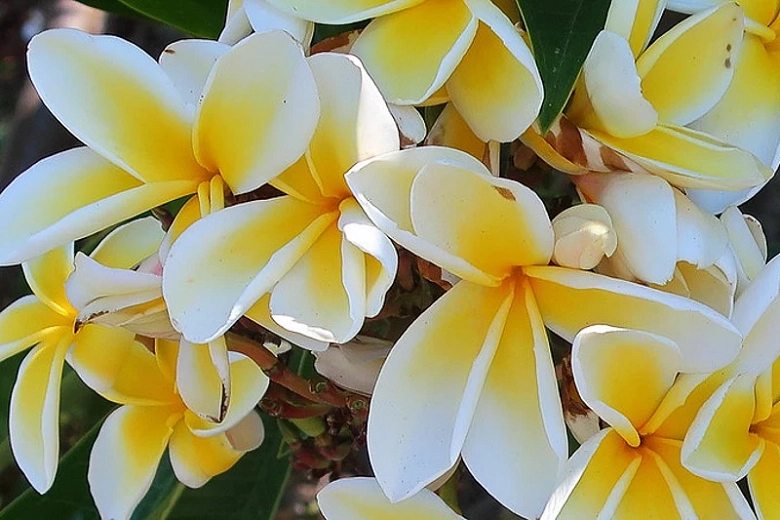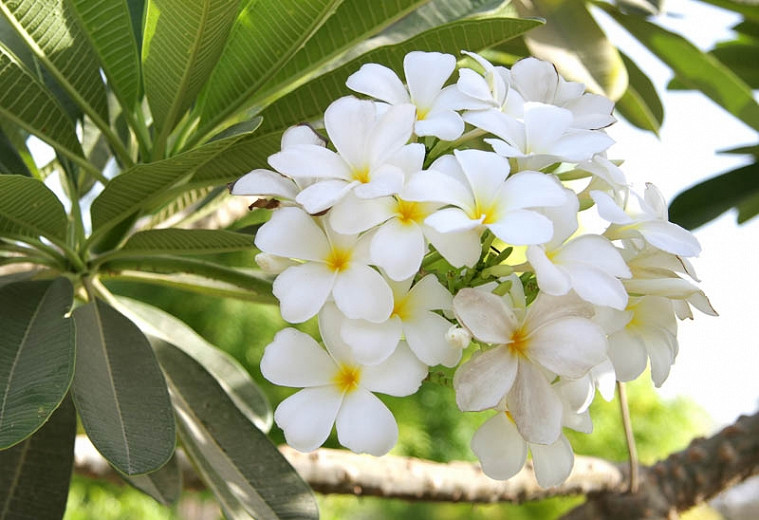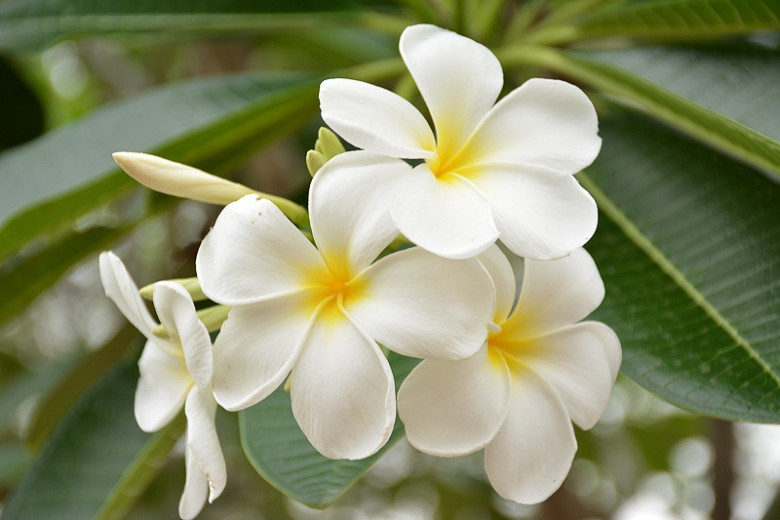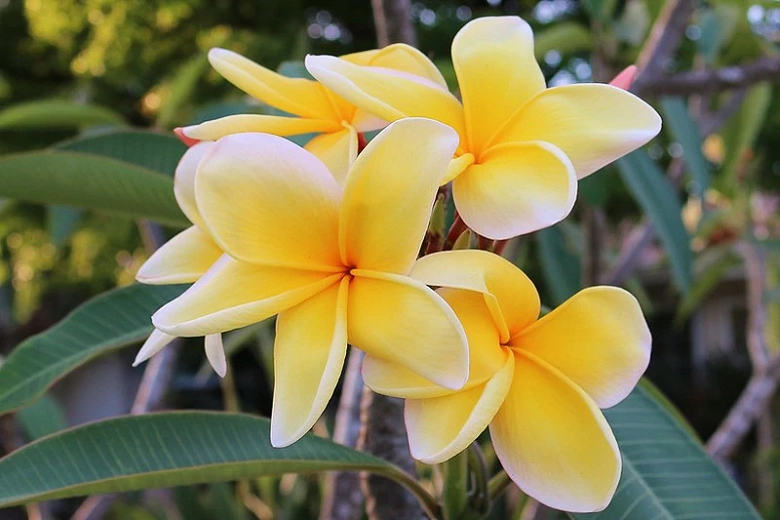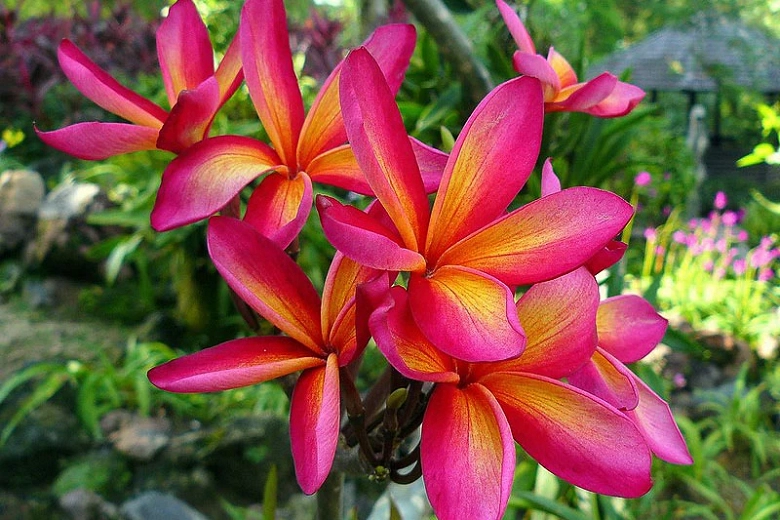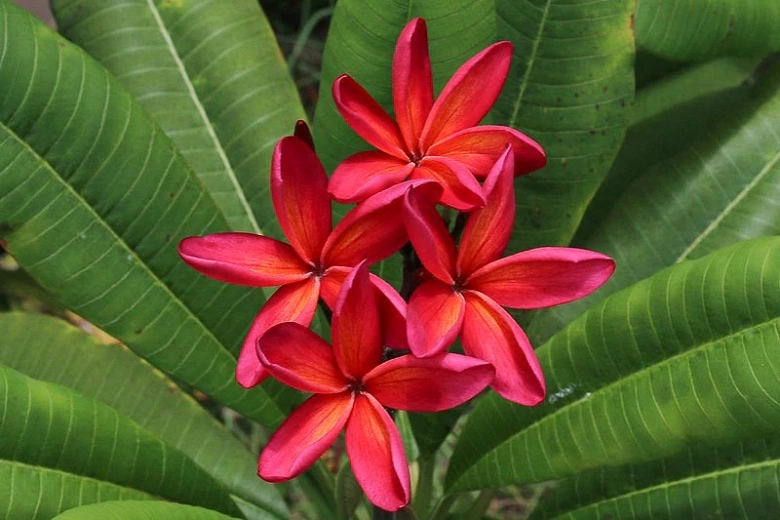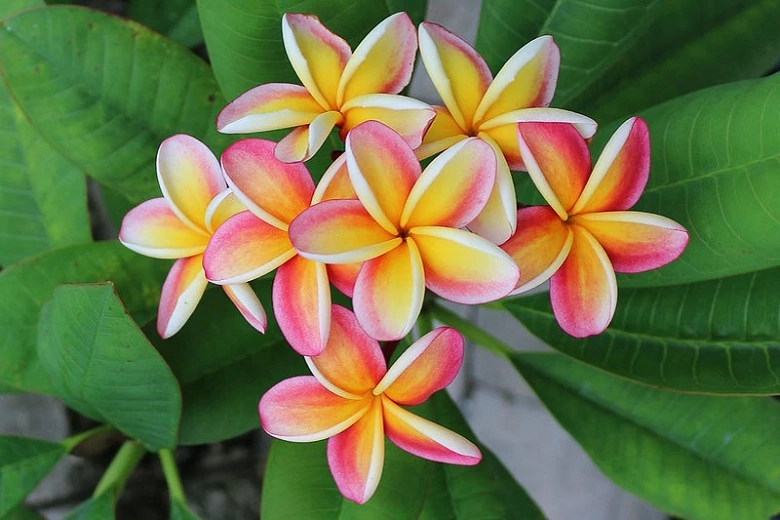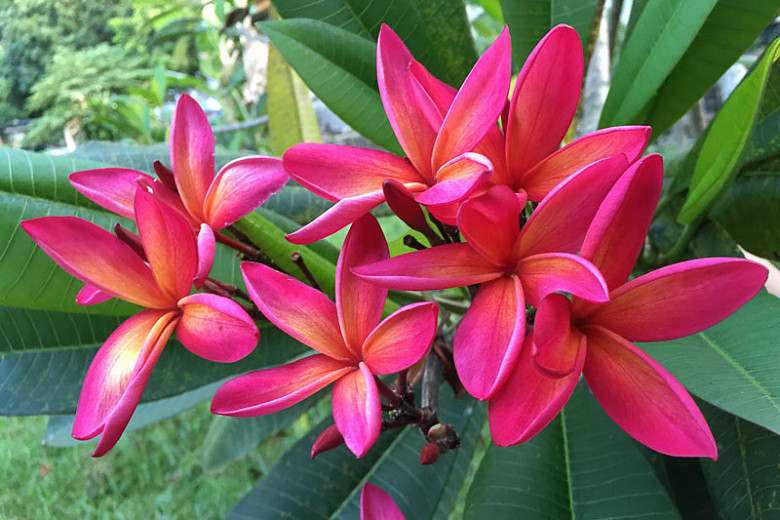Plumeria rubra Celadine (Frangipani)
Prized for its wonderful citrus fragrance, Plumeria rubra ‘Celadine’ (Frangipani) is a deciduous small tree with fleshy, succulent branches boasting large, highly fragrant, brilliant yellow flowers, 3 in. across (7 cm), adorned with broad white edges. Blooming from late spring to fall, the blossoms are borne in terminal clusters at the branch tips.
Prized for its wonderful citrus fragrance, Plumeria rubra 'Celadine' (Frangipani) is a deciduous small tree with fleshy, succulent branches boasting large, highly fragrant, brilliant yellow flowers, 3 in. across (7 cm), adorned with broad white edges. Blooming from late spring to fall, the blossoms are borne in terminal clusters at the branch tips. Leathery, elliptical, lime green leaves are spirally arranged and clustered at the stem ends. Easy to grow and very vigorous, this Plumeria can be planted in the ground or in containers. Grow it near entryways or walkways to enjoy its flowers and delightful perfume. Flower of choice for leis, Plumeria is the crown jewel of the tropical garden.
- Typically grows up to 12-15 ft. tall and wide (360-450 cm). Will add 12-24 in. per year (30-60 cm).
- Performs best in full sun in rich, dry to medium moisture, well-drained soils. Water moderately when in growth, but keep almost dry during the winter months. Salt and drought tolerant.
- Hardy to Zones 10-12, Frangipani is very susceptible to freezing temperatures and may be grown in containers in cooler areas to be brought indoors. A short cold-snap as low as 40°F or 4°C is the limit for this plant. Any parts of the plant exposed to freezing temperatures will die.
- If temperatures drop below 50°F (10°C), the plant will drop its leaves and go dormant.
- Perfect addition to beds and borders, coastal gardens, Mediterranean gardens. Great in decorative containers.
- No serious pest or disease issues. Keep an eye out for rot in soils with poor drainage and glasshouse red spider mite.
- Propagate by ripe cuttings of leafless stem tips in early spring. Allow these to dry thoroughly at the base before inserting them into the rooting medium.
- Plumeria rubra species is native from Mexico to Panama.
- Plumeria branches exude a milky sap when injured, that can irritate the eyes and cause dermatitis in susceptible individuals. Mildly poisonous, ingesting leaves or flowers can irritate the digestive tract. If your dog eats Plumeria, he may show mild to severe signs of poisoning.
Requirements
| Hardiness | 10 – 12 |
|---|---|
| Heat Zones | 10 – 11 |
| Climate Zones | 12, 13, 19, 21, 22, 23, 24, H1, H2 |
| Plant Type | Trees |
| Plant Family | Plumeria – Frangipani |
| Exposure | Full Sun |
| Season of Interest | Spring (Late)Summer (Early,Mid,Late)Fall |
| Height | 12' – 15' (3.6m – 4.5m) |
| Spread | 12' – 15' (3.6m – 4.5m) |
| Water Needs | Low, Average |
| Maintenance | Low |
| Soil Type | Loam, Sand |
| Soil pH | Acid, Alkaline, Neutral |
| Soil Drainage | Well-Drained |
| Characteristics | Fragrant, Showy |
| Tolerance | Drought, Salt |
| Garden Uses | Beds and Borders, Patio and Containers |
| Garden Styles | Coastal Garden, Mediterranean Garden |
